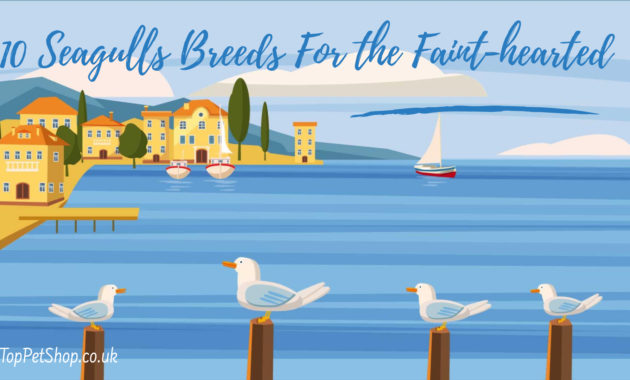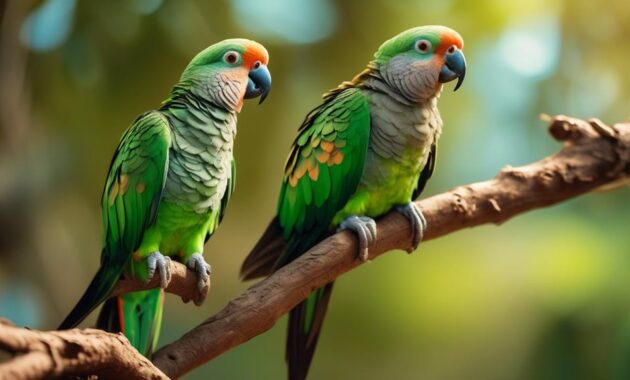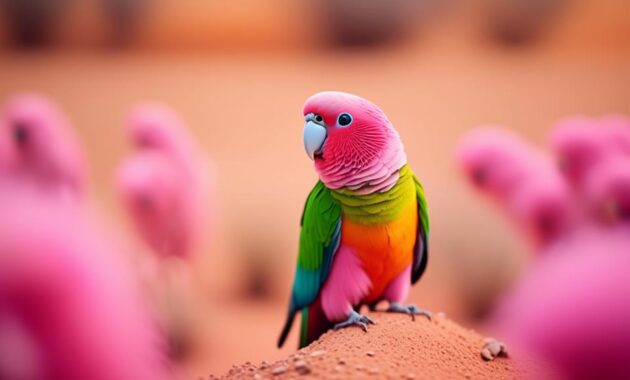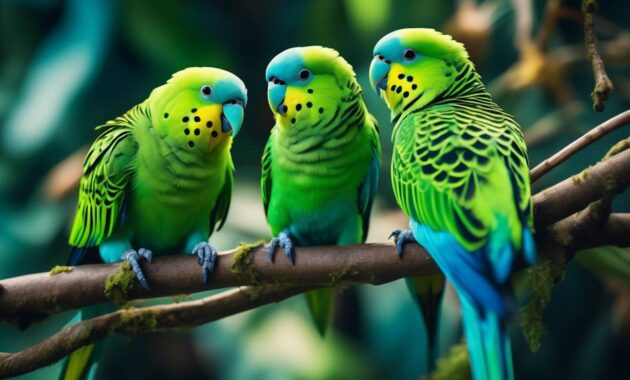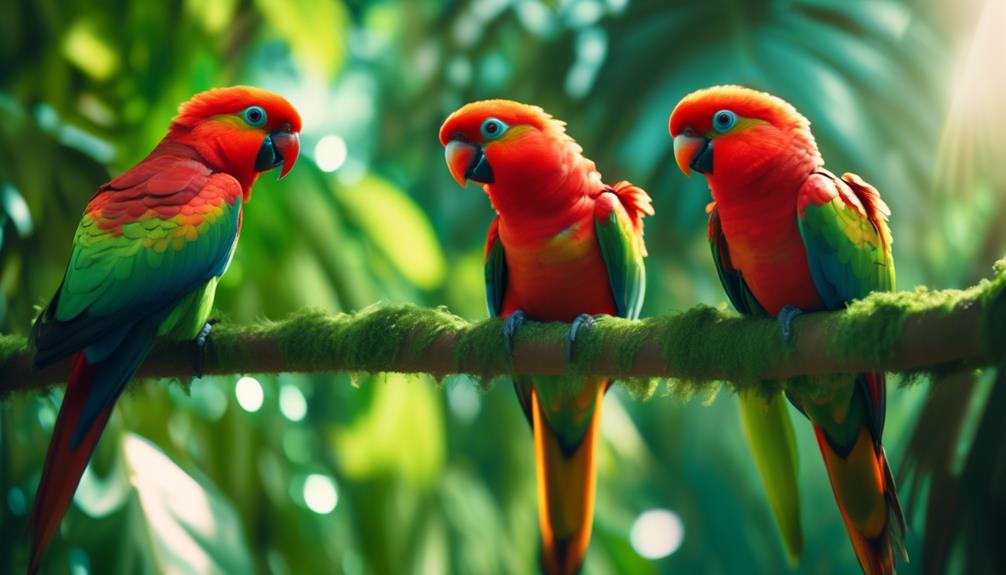
In a world filled with the hustle and bustle of modern life, one might not expect to stumble upon a creature straight out of a bygone era. Yet, nestled among the branches of the lush rainforests, the Red Winged Parrot stands as a living relic of a time long past.
With its vibrant plumage and captivating presence, this avian wonder invites us to step into its enchanting world, a world where beauty, intelligence, and mystery intertwine. But what secrets does this ancient species hold? What makes the Red Winged Parrot truly unique?
As we peel back the layers of this extraordinary creature, prepare to embark on a journey that will leave you yearning for more.
Key Takeaways
- Red Winged Parrots are a species of parrots known for their unique and distinct appearance.
- They require a lot of space and are often kept in aviaries or bird rooms due to their size.
- Red Winged Parrots have a lifespan of 30-50 years, making them a long-term commitment for owners.
- They are not overly noisy compared to other parrot species and have a range of vocalizations.
Physical Characteristics
Red Winged Parrots possess a slender body with a small head and impressive, long tail feathers. They’re approximately 14 inches in length and weigh just over 7 ounces on average. These parrots have a distinctive appearance due to their long tail feathers, which make up a significant portion of their body length.
Because of their size, they require ample space and are often kept in aviaries or bird rooms. Red Winged Parrots have a lifespan of 30-50 years, making them a long-lived species among parrots. They belong to the parrot family and are commonly kept as pets, cherished by bird owners worldwide.
With their charming and distinct looks, as well as their energetic behavior, Red Winged Parrots are popular pets.
Lifespan and Care
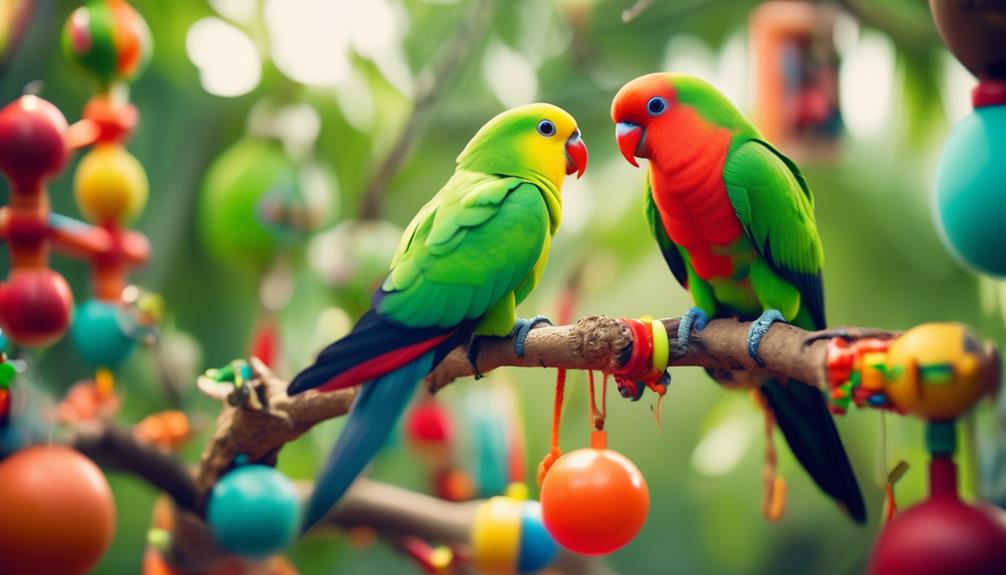
With their long lifespan of 30-50 years, Red Winged Parrots require dedicated care and commitment from their owners. These parrots are considered a long-lived species among parrots, making them a lifetime commitment for their owners. This longevity makes them a good companion for solo owners or multiple generations of one family.
To ensure the well-being of Red Winged Parrots, proper care and a healthy diet are essential. Owners must provide a spacious environment, such as an aviary or bird room, as these birds require a lot of space. Regular veterinary check-ups, exercise, mental stimulation, and social interaction are also crucial for their overall health and happiness.
Bird Species and Behavior
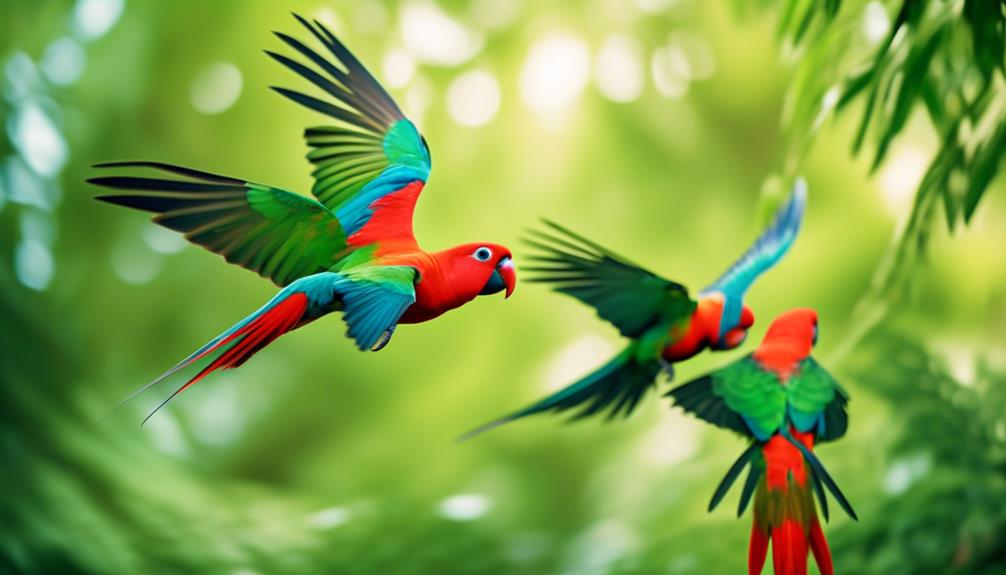
Bird enthusiasts are captivated by the unique and interesting species of parrots known as Red Winged Parrots. These charming and distinct birds belong to the parrot family and are commonly kept as pets in Australia. However, their popularity extends worldwide due to their energetic behavior and inquisitive, intelligent nature.
Red Winged Parrots have a predominantly bright green body, with males having an almost black back and tail, bright red wings, and a small light blue patch beneath their wings. Females are darker green with a wide red stripe on the lower half of their wings.
Compared to other parrot species, Red Winged Parrots aren’t overly noisy, with their vocalizations consisting mainly of natural calls and raucous caws. Providing proper care and attention can help prevent excessive noise.
Colors and Appearance
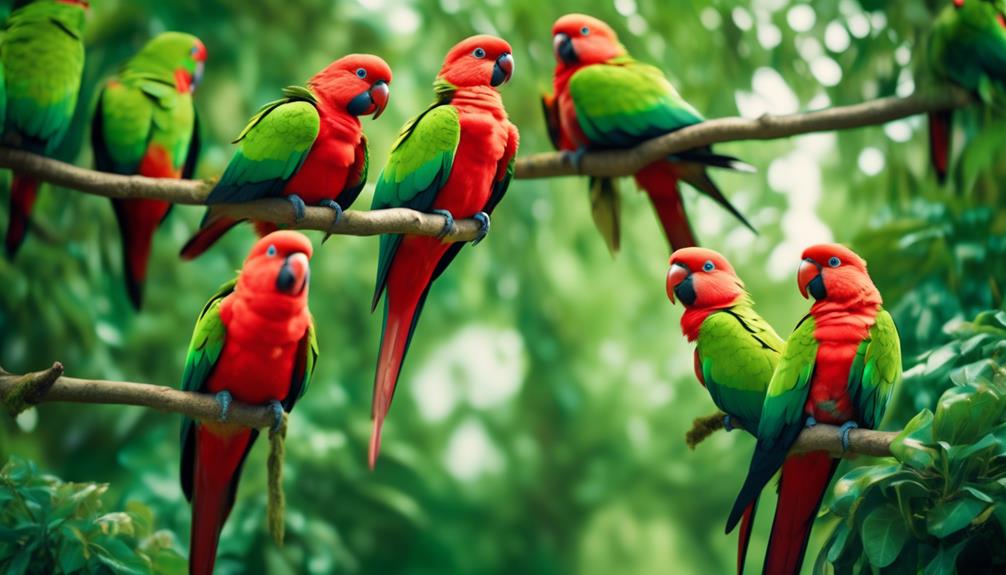
The vibrant hues and striking patterns of the Red Winged Parrot’s plumage make it visually captivating. These parrots have a predominantly bright green body, with males displaying an almost black back and tail, complemented by bright red wings. Male Red Winged Parrots also boast a small light blue patch beneath their wings.
On the other hand, females are darker green than males and feature a wide red stripe on the lower half of their wings. The combination of these colors on Red Winged Parrots makes them visually appealing to potential owners. Whether it’s the deep red of the males or the contrasting shades of green and red on the females, these parrots are sure to catch the eye of anyone who encounters them.
Vocalization
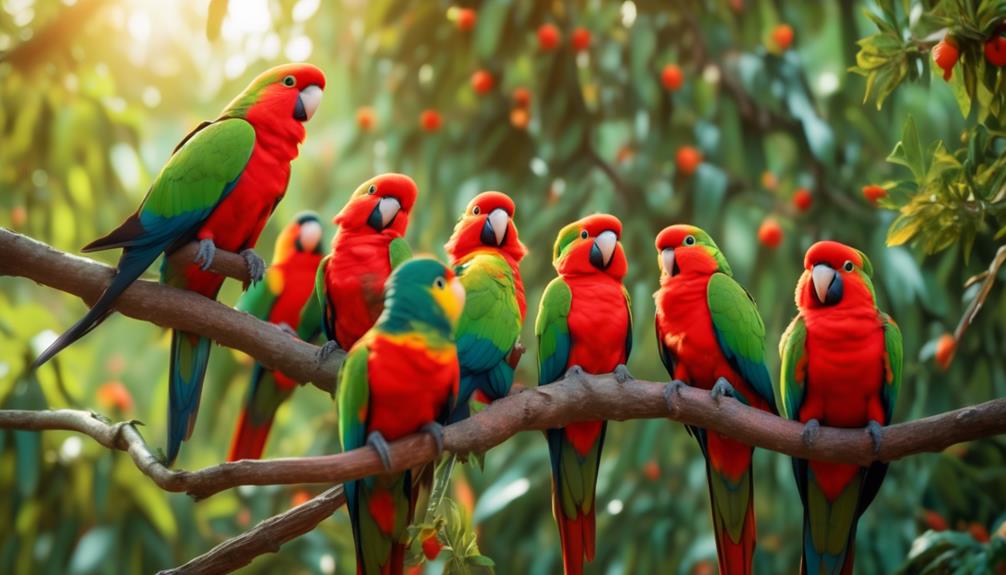
After admiring the vibrant colors and patterns of the Red Winged Parrot’s plumage, it’s intriguing to explore their unique vocalization.
- Red Winged Parrots aren’t overly noisy compared to other parrot species.
- Their main vocal aspect consists of natural calls, which include various raucous caws and throaty noises.
- They might attempt to mimic certain sounds, but it often sounds mumbled.
- Meeting their basic needs, such as providing proper care and attention, can help prevent excessive noise.
Red Winged Parrots have a range of sounds that they can produce, including quiet and natural calls. Their vocalization adds to their charm and uniqueness as pets. While they may not be as talkative as some other parrots, their natural calls and occasional attempts at mimicry make them engaging companions.
Habitat and Natural Environment
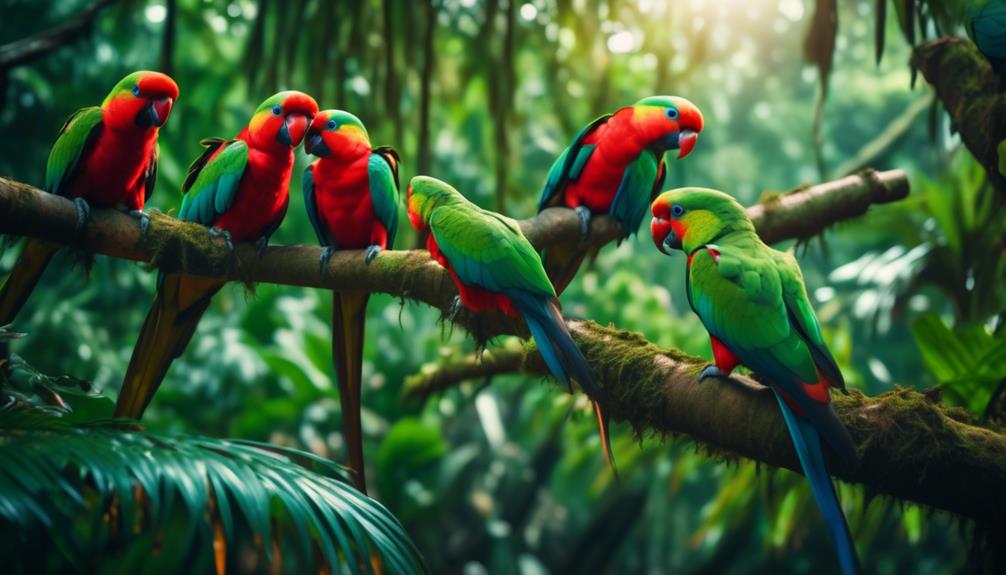
Nestled within the lush green canopies of forests, Red Winged Parrots find their natural habitat and environment. These parrots are native to Australia, where they can be found in various regions, including the coastal areas of New South Wales and Queensland. They prefer habitats that offer a mix of open woodlands, eucalypt forests, and rainforests. These areas provide them with the perfect combination of food sources, nesting sites, and protection.
Red Winged Parrots are also known to inhabit urban areas, such as parks and gardens, where they can easily find food and shelter. Their natural environment is characterized by tall trees, dense vegetation, and a diverse range of plant species, which provide them with ample opportunities for foraging and socializing with other parrots.
Diet and Feeding Habits
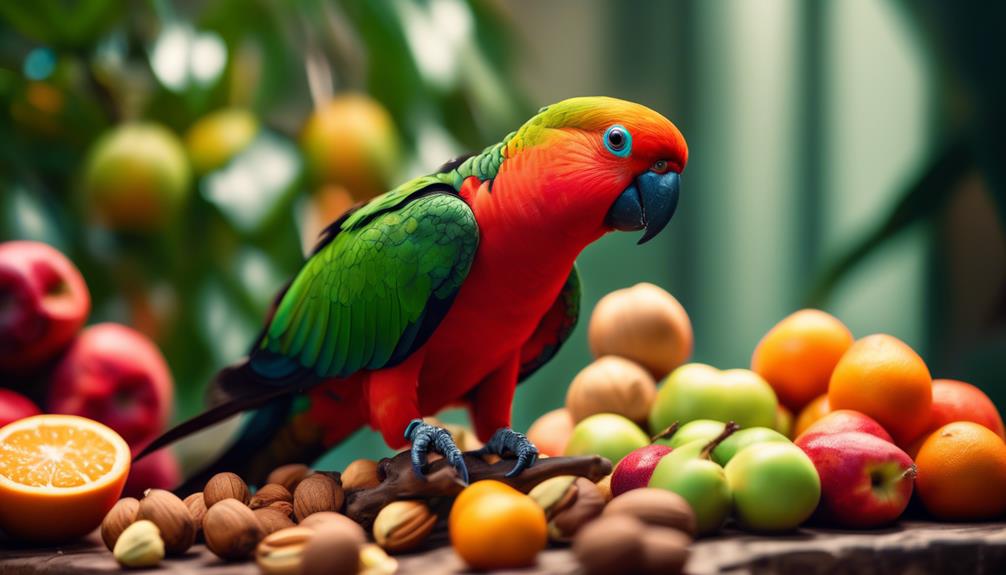
Red Winged Parrots have a diverse diet and unique feeding habits. They consume a variety of foods, including fruits, seeds, nuts, flowers, and even insects. Their feeding habits include foraging for food both on the ground and in trees, using their strong beaks to crack open seeds and nuts. They’re also known to extract nectar from flowers using their specialized brush-like tongues.
Additionally, Red Winged Parrots have been observed feeding on crops such as corn and sunflowers. Their diet is essential for their overall health and well-being, and it’s important for owners to provide a balanced and nutritious diet to ensure their parrots thrive.
Breeding and Reproduction
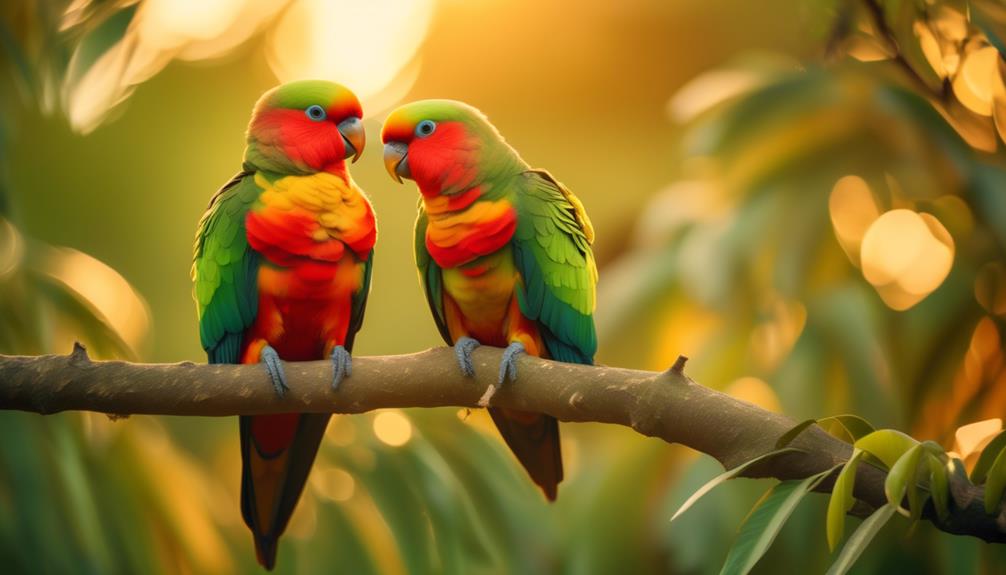
With their diverse diet and unique feeding habits established, Red Winged Parrots also exhibit fascinating behaviors when it comes to breeding and reproduction. These parrots reach sexual maturity at around 2-3 years of age. They’re monogamous, forming long-term pairs that bond for life.
Breeding usually occurs during the spring and summer months, with the female laying 2-4 eggs in a nest cavity. The incubation period lasts for about 21-25 days, with both parents sharing the responsibility of incubating the eggs.
Once the chicks hatch, they’re cared for by both parents, who regurgitate food for them until they’re able to eat on their own. The fledging period lasts for approximately 6-8 weeks, after which the young parrots become independent and start exploring their surroundings.
Unique Features and Adaptations
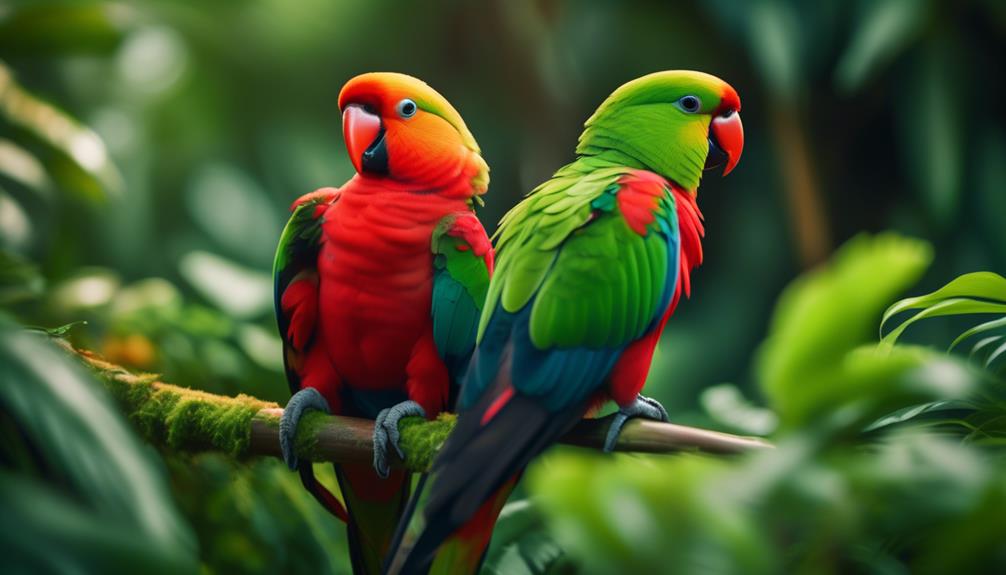
One fascinating aspect of Red Winged Parrots is their unique features and adaptations. These adaptations allow them to thrive in their natural habitat and make them a captivating species to study and observe.
Here are some of the notable features and adaptations of Red Winged Parrots:
- Beak Structure: Red Winged Parrots have a strong and curved beak that’s perfect for cracking open nuts and seeds, their primary food source.
- Flight Ability: They’ve powerful wings that enable them to fly swiftly and maneuver through dense forests with ease.
- Camouflage: Red Winged Parrots have bright green feathers that blend perfectly with the foliage of their surroundings, providing excellent camouflage from predators.
- Social Behavior: They’re highly social birds and form tight-knit flocks, which helps them find food, protect themselves, and communicate effectively.
These unique features and adaptations make Red Winged Parrots a remarkable and well-adapted species in their environment.
Social Behavior and Communication
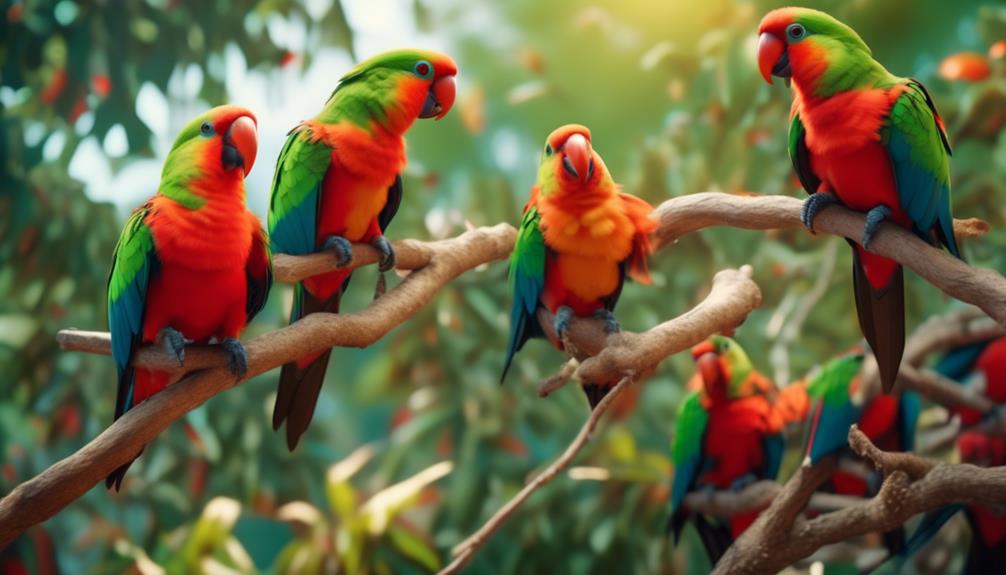
Social behavior and communication play a crucial role in the lives of Red Winged Parrots, enabling them to thrive in their natural habitat. These parrots are highly social creatures and are often found in flocks, which can consist of up to 30 individuals. Within these flocks, they engage in various behaviors to establish and maintain social bonds.
Red Winged Parrots communicate through a combination of vocalizations, body language, and visual displays. Their vocalizations include a range of calls, from soft chirps to loud screeches, which they use to communicate with each other and establish their territory. Additionally, they use body language, such as wing flapping and head bobbing, to convey different messages.
Through their social behavior and effective communication, Red Winged Parrots are able to navigate their environment, find food, and ensure their survival.
Training and Enrichment
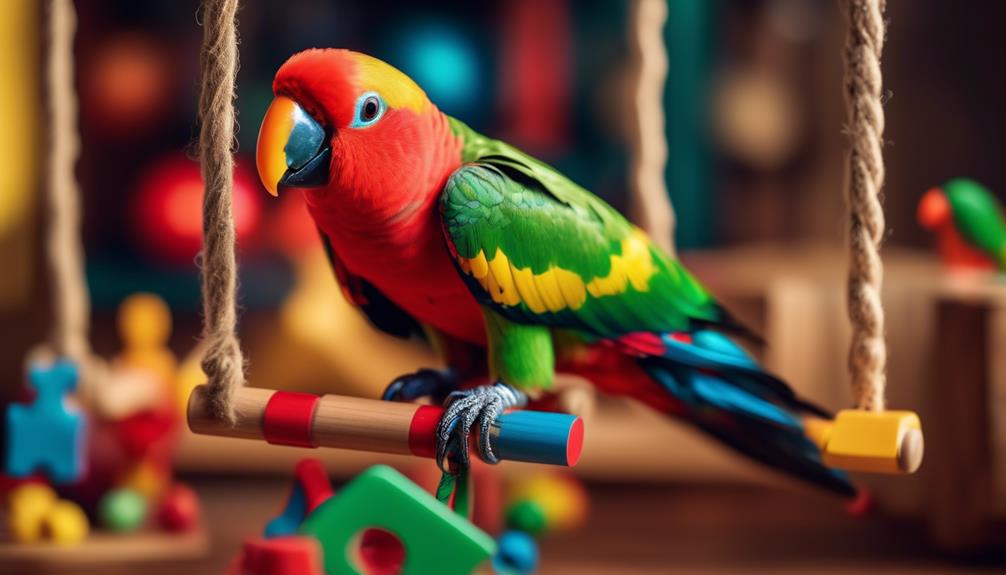
Training and enrichment are essential aspects of caring for Red Winged Parrots, allowing them to develop their cognitive abilities and thrive in captivity. Here are some key points to consider:
- Positive Reinforcement Training: Red Winged Parrots are highly intelligent and can be trained to perform tricks, mimic words, and even solve puzzles. Positive reinforcement, such as treats or praise, is effective in shaping their behavior.
- Environmental Enrichment: Providing a stimulating environment is crucial for the mental well-being of Red Winged Parrots. This includes offering a variety of toys, perches, and foraging opportunities to keep them engaged and prevent boredom.
- Socialization: Red Winged Parrots are social creatures and benefit from regular interaction with their owners. Spending time together, talking to them, and allowing supervised interactions with other birds can enhance their social skills.
- Mental Stimulation: Engaging Red Winged Parrots in activities that challenge their problem-solving abilities, such as training sessions and puzzle toys, can keep their minds sharp and prevent behavioral issues.
Health and Common Diseases
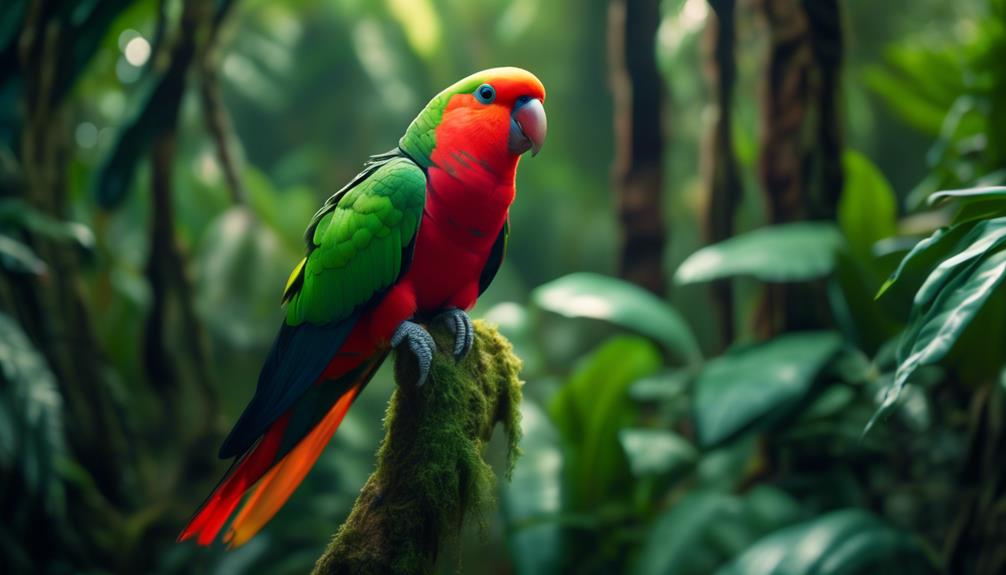
Red Winged Parrots require proper health care and are susceptible to various common diseases. It is important for owners to be aware of these diseases and take necessary precautions to keep their parrots healthy. Below is a table outlining some common diseases that Red Winged Parrots may be prone to:
| Disease | Symptoms |
|---|---|
| Psittacosis | Respiratory problems, diarrhea, lethargy |
| Feather plucking | Excessive preening or pulling out feathers |
| Bacterial infections | Swollen or red eyes, loss of appetite |
| Vitamin deficiencies | Dull feathers, poor growth |
Regular veterinary check-ups, a balanced diet, and a clean environment are essential for preventing these diseases. Owners should also provide mental stimulation and plenty of exercise to keep their parrots physically and mentally healthy. By taking these precautions, owners can ensure that their Red Winged Parrots live long and happy lives.
Legal Considerations and Regulations
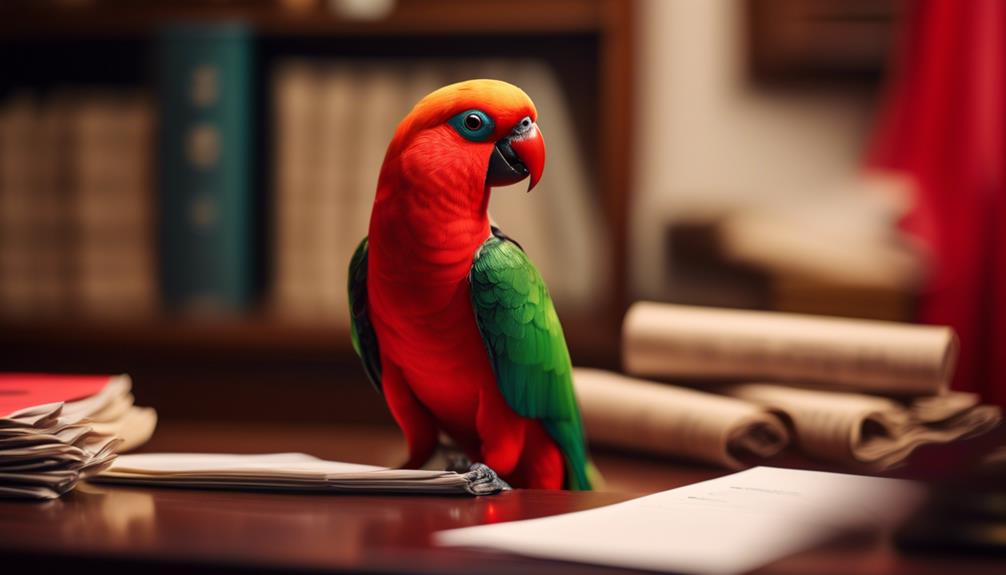
After ensuring the health and well-being of Red Winged Parrots, owners must also be aware of the legal considerations and regulations surrounding their ownership. Here are some important points to keep in mind:
- Ownership Laws: It’s crucial to understand the laws and regulations regarding the ownership of Red Winged Parrots in your specific location. Some areas may require permits or licenses to keep these birds as pets.
- Import and Export Restrictions: If you plan to acquire a Red Winged Parrot from another country or sell one internationally, you must be aware of the import and export restrictions in both your country and the destination country.
- Conservation Efforts: Red Winged Parrots are a protected species in some regions due to their declining population. It’s important to support conservation efforts and avoid purchasing birds from illegal sources.
- Ethical Breeding and Trade: When acquiring a Red Winged Parrot, it’s essential to ensure that the breeder or seller follows ethical practices and adheres to local regulations. Responsible breeding and trade help maintain the health and genetic diversity of the species.
Red Winged Parrots in Art and Culture
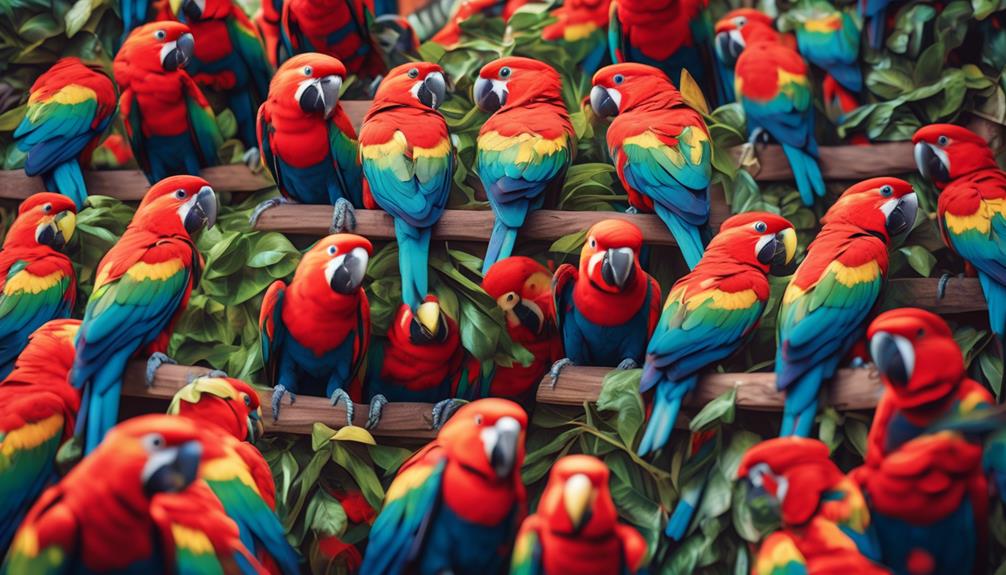
The enchanting presence of Red Winged Parrots has inspired artists and captivated cultures around the world. These vibrant and visually striking birds have been featured in various forms of art, from paintings to sculptures and even textiles.
In indigenous Australian art, Red Winged Parrots are often depicted as symbols of vitality and spiritual connection to the land. Their vibrant red wings and green bodies are a common motif in Aboriginal paintings, representing the beauty and diversity of the natural world.
In addition to their representation in art, Red Winged Parrots have also found their way into cultural celebrations and folklore. In some cultures, they’re believed to bring good luck and prosperity.
Their captivating appearance and unique behaviors have made them a beloved subject in art and an important cultural symbol in many societies.
Conservation and Threats
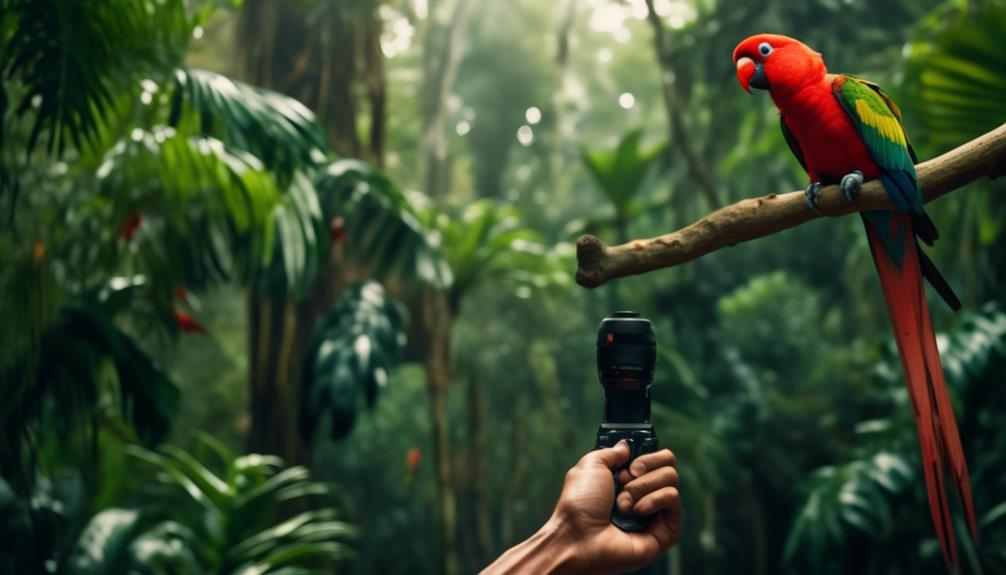
One of the key concerns for the conservation of Red Winged Parrots is the impact of habitat loss and fragmentation. This beautiful species relies on specific habitats for nesting, foraging, and breeding. As their natural habitats are destroyed or fragmented, their population faces significant threats.
Other factors contributing to their conservation challenges include:
- Illegal trapping and trade: Red Winged Parrots are highly sought after in the illegal pet trade market, leading to a decline in their wild population.
- Climate change: Changes in temperature and weather patterns can disrupt the availability of food and nesting sites for these parrots.
- Predation: Introduced predators, such as rats and cats, pose a threat to Red Winged Parrots, especially during nesting season.
- Lack of awareness and protection: Limited awareness about the importance of conserving this species and inadequate protection measures further jeopardize their survival.
Efforts are being made to address these threats and promote the conservation of Red Winged Parrots through habitat restoration, anti-poaching initiatives, awareness campaigns, and legal protection measures.
Frequently Asked Questions
What Are Some Common Health Issues That Red Winged Parrots Can Face?
Red Winged Parrots can face common health issues such as respiratory infections, feather plucking, and nutritional deficiencies. Regular veterinary check-ups, a balanced diet, and a clean environment are essential for maintaining their well-being.
Can Red Winged Parrots Be Trained to Do Tricks or Perform Certain Behaviors?
Red Winged Parrots can be trained to do tricks and perform certain behaviors. Their inquisitive and intelligent nature makes them quick learners. With proper training and positive reinforcement, they can master a variety of tricks and behaviors.
Are Red Winged Parrots Legal to Own as Pets in All Countries?
Red Winged Parrots’ legality as pets varies by country. While they are commonly kept as pets in Australia, it’s essential to research local laws and regulations before owning one in other countries.
What Are Some Unique Adaptations That Red Winged Parrots Have for Survival in the Wild?
Red Winged Parrots have unique adaptations for survival in the wild. They have strong beaks for cracking open nuts and seeds, and their long, slender tails help them maneuver through dense foliage. These adaptations aid in their search for food and evade predators.
Are There Any Specific Cultural or Artistic Representations of Red Winged Parrots in History or Popular Culture?
In history and popular culture, there are various cultural and artistic representations of red winged parrots. They are often depicted in paintings, sculptures, and indigenous art, symbolizing their beauty, vibrancy, and connection to nature.
What Makes Red Winged Parrots Enchanting Compared to Celestial Parrotlets?
Red-winged parrots are enchanting with their vibrant colors and playful nature, while celestial parrotlets captivate with their small size and charming personalities. Each brings a unique charm to the avian world, making them both fascinating to observe and appreciate.
Conclusion
In conclusion, the Red Winged Parrot is truly a remarkable and enchanting species. With its vibrant colors, intelligent nature, and long lifespan, it makes for a wonderful companion for those willing to commit to its care.
From their physical characteristics to their behavior and vocalization, these parrots have captivated the hearts of bird enthusiasts worldwide.
It’s important to remember the legal considerations and conservation efforts surrounding these beautiful birds to ensure their continued presence in our world.

